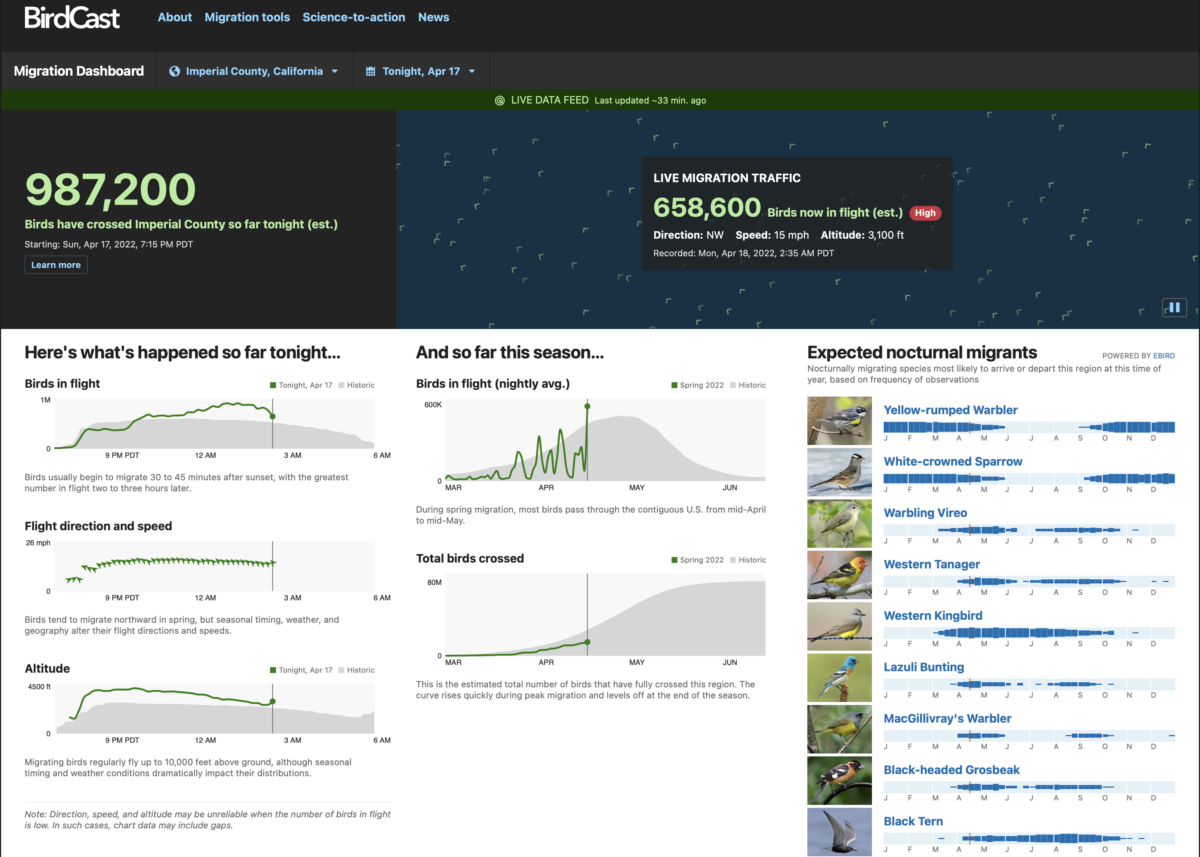In Spring 2018 the BirdCast team unveiled two new migration monitoring tools: 1) our migration forecasts based on models trained on the last 23 years of bird movements in the atmosphere; and 2) our real-time analysis maps based on additional research showing intensities of actual nocturnal bird migration. Both tools are powered by the US network of weather surveillance radars. These tools have become a mainstay for BirdCast outreach and education, research, and conservation action. This week, the team unveils another new tool that we have long sought to provide, one that we hope will realize similar potential: the BirdCast Migration Dashboard!
The dashboard was designed and developed by the incredible technical team of Audrey Carlsen, Taylor Long, Matt Schloss, and Heather Wolf, showcasing analyses performed by Dr. Adriaan Dokter. Primary support for this tool came from Lyda Hill Philanthropies, Amon G. Carter Foundation, and Leon Levy Foundation.
The new offering affords access to radar-based summaries of nocturnal bird migration at resolutions previously unavailable through BirdCast’s national map graphics, including estimates of the total number of birds migrating as well as their directions, speeds, and altitudes. The dashboard provides data for counties and states in the contiguous US, complementing our existing forecast and live migration maps and allowing you to explore nocturnal bird migration at much finer scales. An exciting addition to the migration information that we provide from radar data is another new presentation – “Expected Nocturnal Migrants” – a list of the nocturnally migrating species most likely to arrive or depart based on frequency of observations powered by eBird. This species-based summary has long been a goal, similar to information we presented previous as “species on the move” in earlier BirdCast seasons.
As your explorations begin, discovering interesting, new and previously unknown patterns will be, perhaps, the most exciting aspects of the new tool. Check out what happened on Sunday night, 17-18 April 2022, on the live migration map, and then look at the dashboard for Duval County, Florida, Cameron Parish, Louisiana, Cameron County, Texas, Imperial County, California, and Klamath County, Oregon.

An example of the BirdCast Migration Dashboard showing information for Imperial County, California in the early morning of 18 April 2022.




